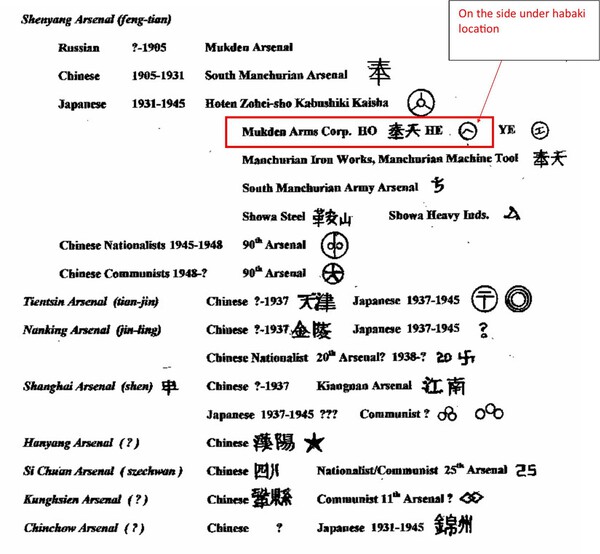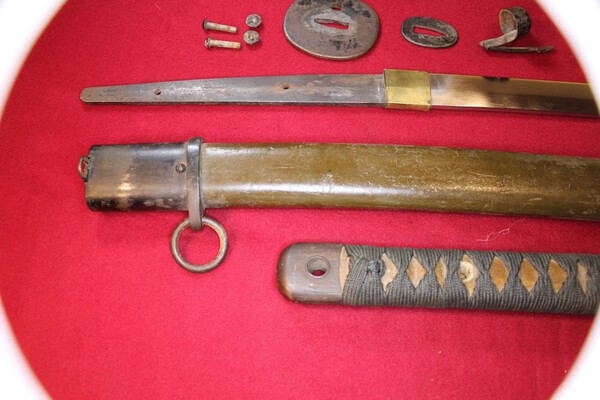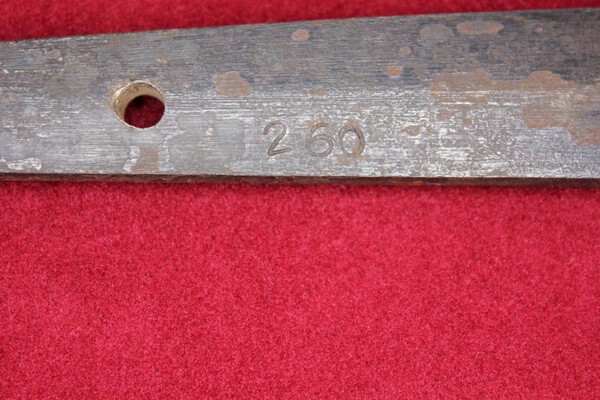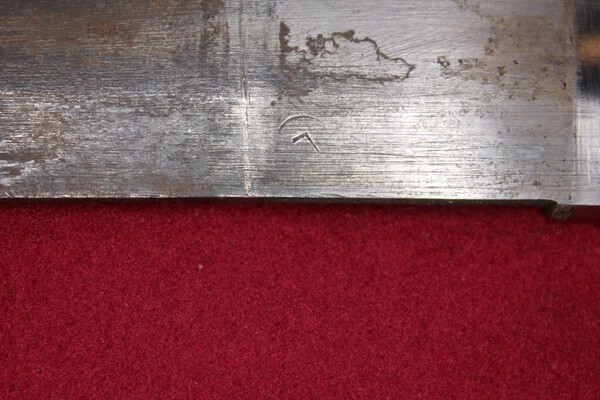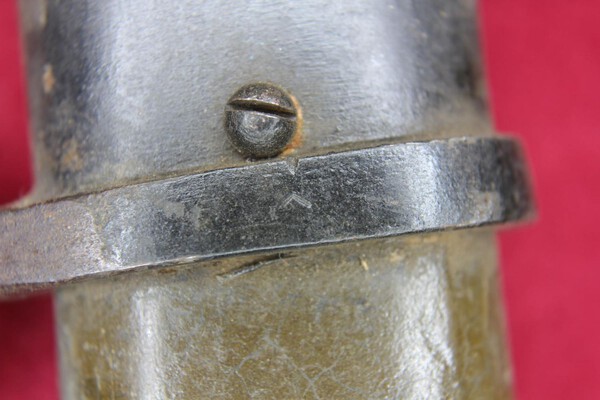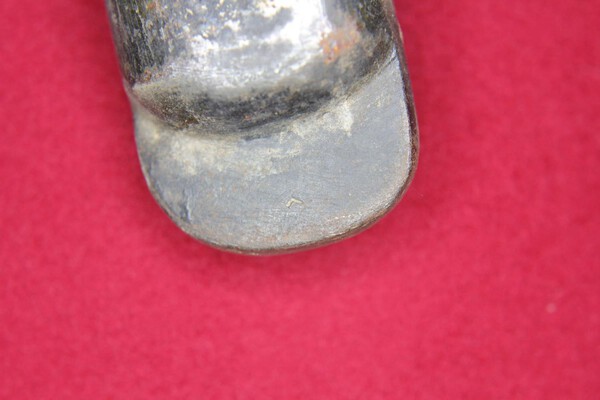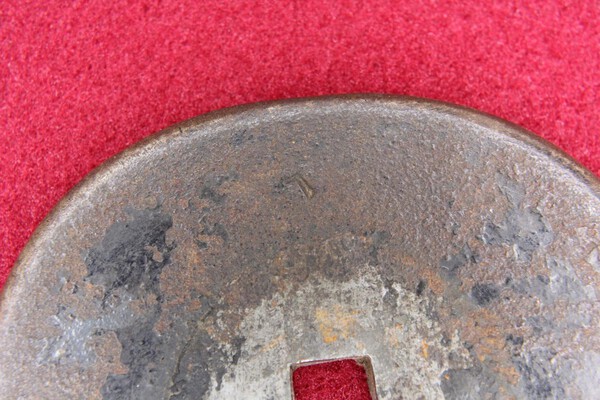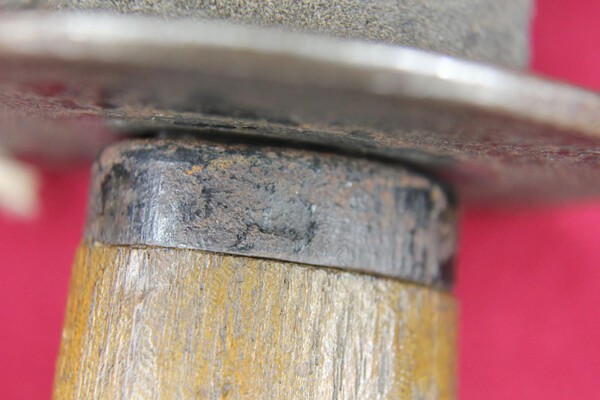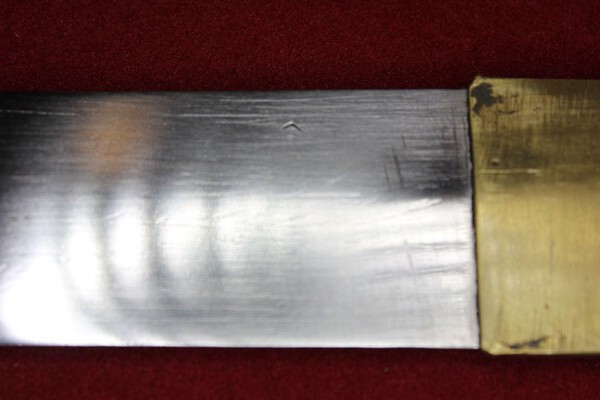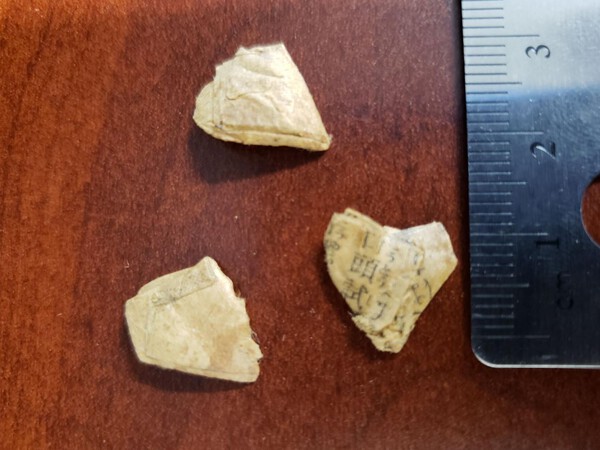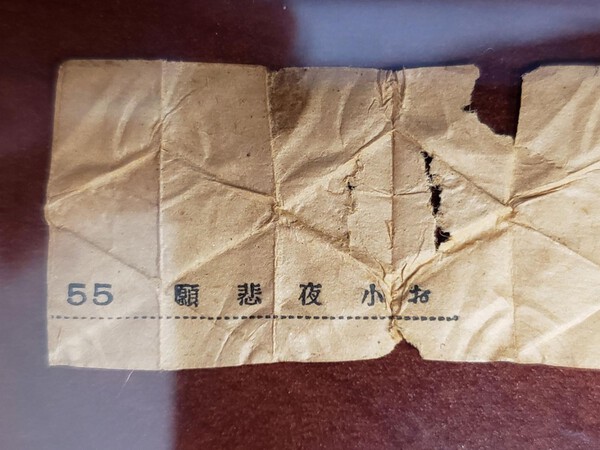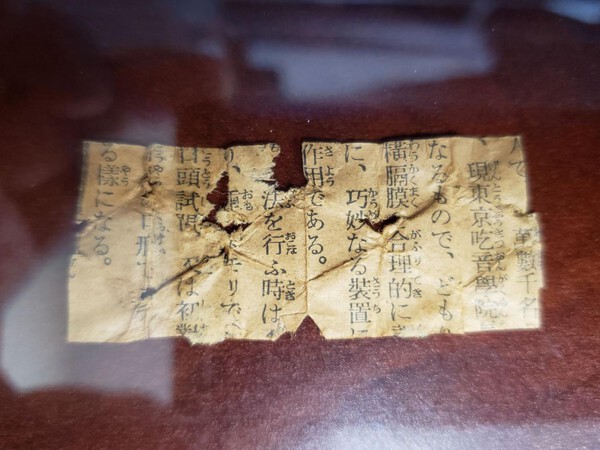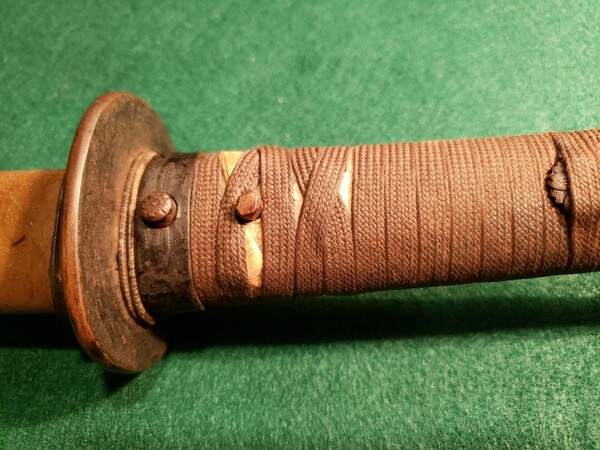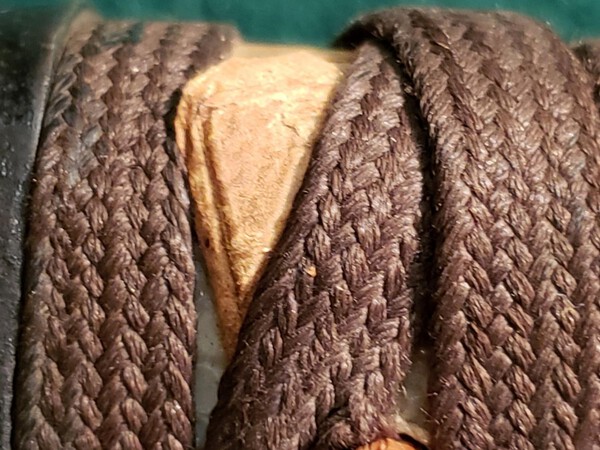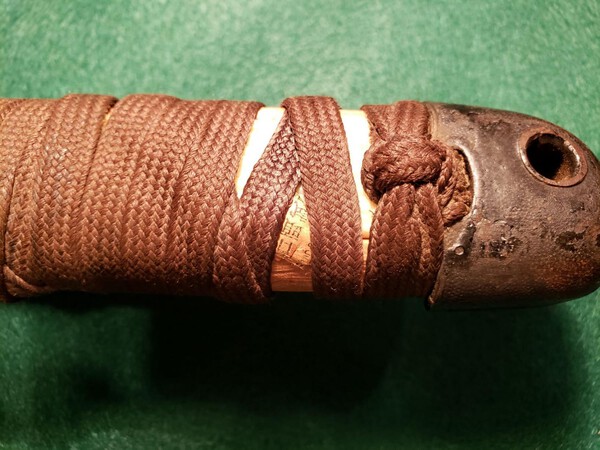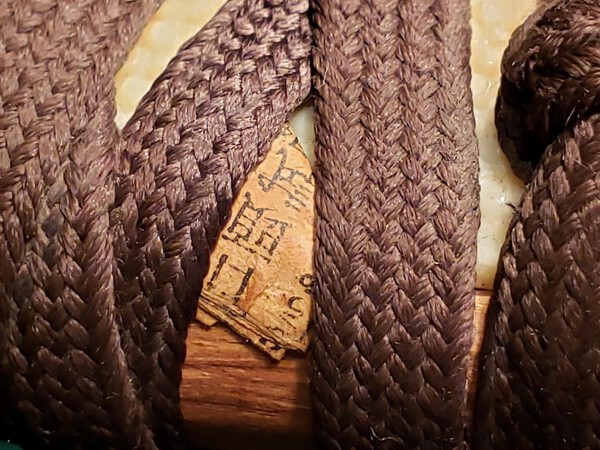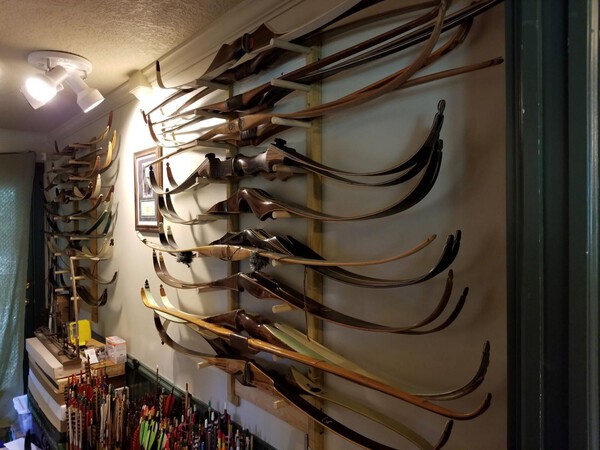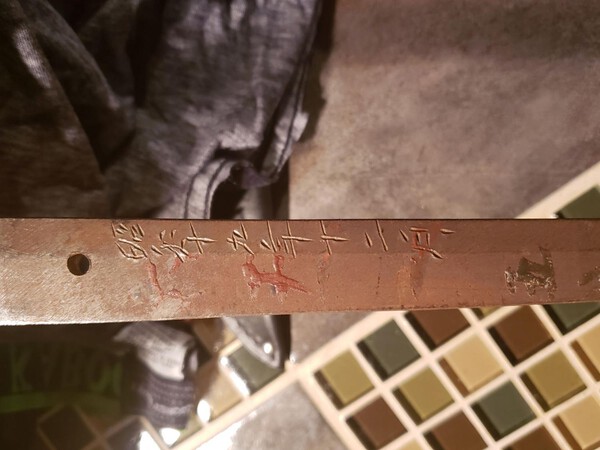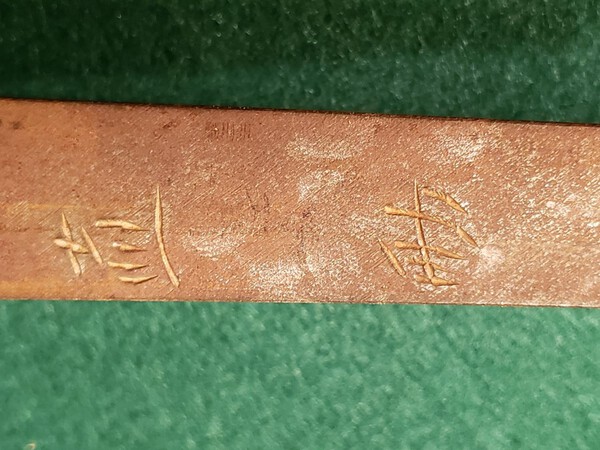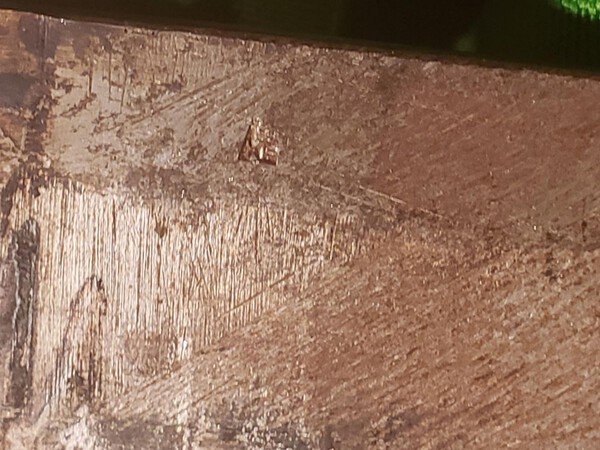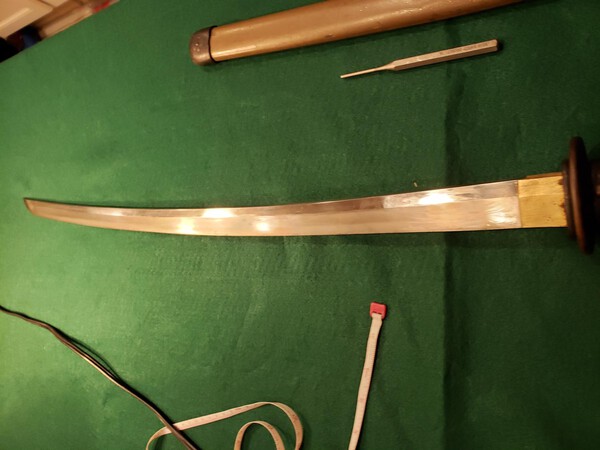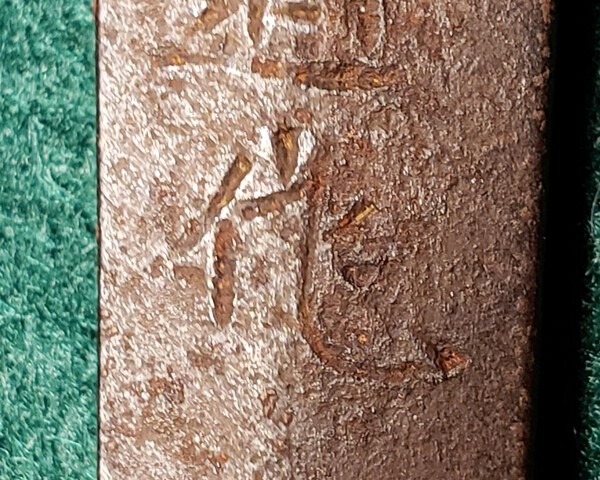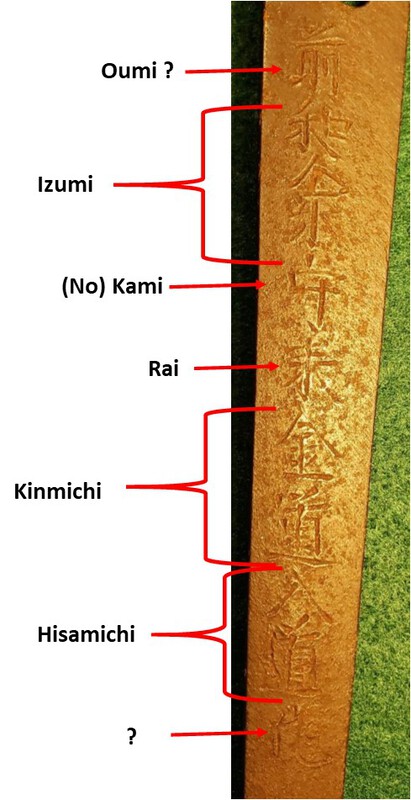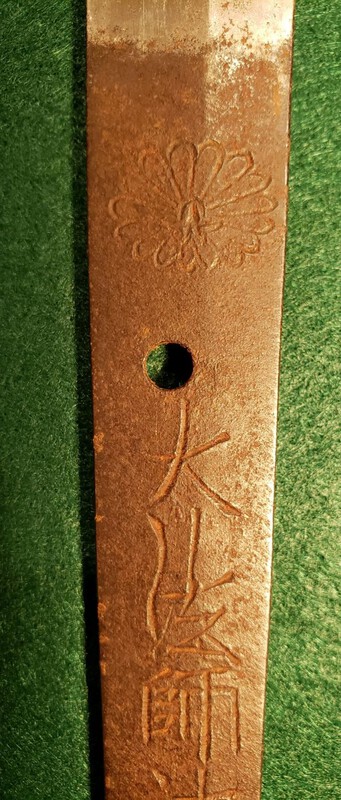-
Posts
49 -
Joined
-
Last visited
Everything posted by WilBru5
-

Questions about "late war", NCO swords
WilBru5 replied to WilBru5's topic in Military Swords of Japan
Bruce In reading the Ohmura study; I note Mr. Ohmura does mention HE mark (without a circle) as being the Incheon army arsenal inspection stamp. Further down I also note he discusses the Mukden factory inspection mark "HO". But Mr. Ohmura doesn't mention the Mukden factory "HE" (with a circle ), nor the Mukden factory "YE"... I do not know his reason for omitting these two inspection marks. Further reading of Ohmura study also shows what he terms as a "Last stage type" and a "The Maximum last stage type", both of which he attributes as "Nagoya army arsenal made". the numbers and the stamps on the two blades appear very different in composition. It could be wishful thinking on my part, but it sure looks like a "HE" before the number on that maximum late stage one...I wish I could see a better closer picture of the number and mark. -

Questions about "late war", NCO swords
WilBru5 replied to WilBru5's topic in Military Swords of Japan
Thank you Neil. Do you find the Heijo/Jinsin stamp on the suspension ring mount? How about on the tsuba and the fuchi? -

Questions about "late war", NCO swords
WilBru5 replied to WilBru5's topic in Military Swords of Japan
Bruce P Question out of curiosity? From what I am learning; all the stamps except one appear to be Jinsin arsenal stamps. The exception is the one on the side of the blade closer to the nakago, this stamp has a circle around the HE? I found a listing of stamps which makes me curious. Have you a copy of this, and am I seeing it correctly? -

Questions about "late war", NCO swords
WilBru5 replied to WilBru5's topic in Military Swords of Japan
Thanks all for the affirmation of the sword. I am still learning Bruce, and lack much information of the process... But seems to me all the blades of a factory produces production run would be pretty much the same, (all within a certain tolerance), any blade out of tolerance would have been rejected... thus no need for koshirae makers to produce individualized koshirae to a blade. because it is being made to fit a specific pattern, the koshirae could also be made in a production run then mated to the blades by fitters. Slight adjustments would be made at the time of fitting the koshirae to the blade... thus no necessity to stamp a number in the blade relating to koshirae. How about possibly a production run number? Part of my background comes from decades of factory work including product development, quality control, and production run development of new products... those experiences is why I make the comments reqarding your thoughts on whether the stamped numbers on the nakago relate to koshirae fitting. I do not question your knowledge, I very much value your insight and the information you bring to the table. When I received this sword I thought it possibly a fake, because of how "unrefined" the construction is... That is part of the reason I have devoted so much effort into researching this particular variation. And in doing so I keep finding the same instances as I pointed out in my first set of questions. Shamsy, or Steve, (which name do you prefer I converse with you by?) Does your pattern 8 have an arsenal mark on the blade? and is there an arsenal mark on the fuchi or tsuba? Does your pattern 8 have the same saya construction? And if so, does the saya have a arsenal mark on the drag? Also I now see there is an example of a pattern 6 displayed on a post on WarRelics forum with a numbered blade and the HE mark by the number + a wooden saya… and you can also see the HE mark on the saya (approximately the same place as mine has it). The pommel is of the same less refined construction.... bringing me back to wondering how active was the Heijo factory of Korea in the production of these particular variations? -

Questions about "late war", NCO swords
WilBru5 replied to WilBru5's topic in Military Swords of Japan
-

Questions about "late war", NCO swords
WilBru5 replied to WilBru5's topic in Military Swords of Japan
Bruce I am away for thanksgiving, but will post pictures of the sword right after I get back. -
I am still new to the learning curve of collecting Gunto, so please excuse if this is al ready a well known and covered topic. As I am gathering knowledge I have noticed something which I find interesting and curious. The swords described as "Late war" ,or "Last ditch", " Late War NCO sword"... As I understand it there is excepted to be 4 variations of these. What caught my eye is what I notice, and what is spoke of in a page of Dawson's book( I don't have access to the book, I just ran into a graphic of the page). Anyway every Ito wrapped Tsuka example I can find...are less refined than the cross hatched wood tsuka variations. Also, none of the Ito wrapped "variation #4" examples I have found have a serial number on the blade, nor do they have a fullered blade. Where as every example of the cross hatched variations have the serial number on the blade, and some are fullered as well. I found one Ito wrapped example with the tsuka removed which had a serial number on the nakago(tang)…. which has me wondering if the other variation #4 have a serial number on the nakago… But the thing which caught my eye the most is every ito wrapped variation #4 example which I can see the blade has the "HE" stamp of the heijo factory of Korea. The ones with wood saya where I can see the drag also have the "HE" stamp.... The page out of Dawson's book describe the two which have a readable mark as being the "HE" stamp... I have not seen any example of the less refinded, ito wrapped tsuka, variation #4 with any other stamp than the Heijo factory "HE". However I have yet to see any example of the more refined cross hatched tsuka variation with a "HE" stamp? This leads me to the questions: has anybody else who owns a ito wrapped variation #4 taken the tsuka off and found a serial number on the tang? Has anybody else seem an ito wrapped variation #4 with any other stamp besides the HE of the heijo Factory in Korea? Does anyone have a variation #2 or #3 with the HE heijo factory stamp? If the answers are "yes" "no" & "NO"; then it makes me ask if all of the ito wrapped variation #4 were made by the Heijo factory.... and none of the other variations were made by the Heijo factory. And is there any sugnifigence to this? always learning
-

Folded paper under tsuka-ito... doesn't look like hishigame?
WilBru5 replied to WilBru5's topic in Military Swords of Japan
Thanks Chris I will re-arrange the seppa. Also thank you for a very good picture of the correct wrap, I will see what can be done there. I'll follow the link, more information is always good. Thanks again. -

Folded paper under tsuka-ito... doesn't look like hishigame?
WilBru5 replied to WilBru5's topic in Military Swords of Japan
As the learning process goes; sometimes my mind gets swayed... I don't think I will "just yet" attempt to re-wrap the maki, or have the tsuka-maki redone... many examples I have found through researching show very similar wrap... thus I think more study is needed before I initiate action. I am coming to understand there is much discussion regarding this kind of shin gunto... not an official type, but rather a variant? A "Rinji Seishiki Gunto" as it is refered to by Mr. Nick Komiya(who seems to be very knowledgeable and a dedicated researcher). As for the folded paper; I think it is hishigame... I don't think they are the laudry list tho. There are more under the wrap that I have not removed. I will probably refold these and re-insert them. Also the seppa tsuba seems pretty consistent with the examples as well. As I am pretty new to this knowledge base, any additional thoughts by more informed individuals than myself is welcome. -

Folded paper under tsuka-ito... doesn't look like hishigame?
WilBru5 replied to WilBru5's topic in Military Swords of Japan
Ok Chris S. If I am going to correct things I need to learn a bit more, (Which is why I joined this group). If I understand correctly this sword is a commissioned officer's "Shin-Gunto" Army type 3... The correct tsuka-ito wrap should be katate-maki(battle wrap) and not ikkan-maki…And is there a correct color,( I have seen red, brown, & green examples) wrap? What about reusing the ito which on the tsuka now? The examples I have found so far show the same round iron tsuba, but don't seem to give a consistent description of seppa ? This could be a fun project... I look forward to advise. -

Folded paper under tsuka-ito... doesn't look like hishigame?
WilBru5 replied to WilBru5's topic in Military Swords of Japan
So... then am I reasonably same with pulling them out to see what is printed there? Or am I risking destroying something of historical signifigance? -
Hello all. apon closer inspection of the gunto, which I have previously sought translation for. I can see folded paper under the ito... but the paper doesn't look like the examples of hishigame I find online? I don't find discriptions of putting hishigame a katate-maki wrap....So I am curious if others have found things like these. in carefully nudging around the ito; I can see print on one piece closest to the kashira. a visible paper closer to the tsuba shows ware from rubbing, and no print is readily visible. I am resisting the temptation to pull them out and unfold them to see what is printed there.... I thought I would share. Plus, any advise here would be greatly appreciated.
-
- 111 replies
-
- 10
-

-
This is another of swords I acquired. So far I have been unable to find the Smith listed anywhere. I also wonder if the mei is an "expression" instead of a name?
-
Thanks I will do so
-
Thanks Trystan
-
Hello Bruce P. Here is another "W" stamped blade for you. I haven't learned who the smith is yet. nor have I yet translated the date. There are two other stamps, 1 on the tang and one on the edge. Hope this helps apparently I haven't quite learned who to correctly edit pics before I upload. sorry
-
And how would I accomplish this?
-

Gunto blade coated with clear coat... how to remove it safely.
WilBru5 replied to WilBru5's topic in Military Swords of Japan
-

Gunto blade coated with clear coat... how to remove it safely.
WilBru5 replied to WilBru5's topic in Military Swords of Japan
Hello Omar The coating is hard and clear, may even be a poly? -
-
Hello Recently I acquired a couple swords.... In researching them I found this forum, and due to the knowledge base displayed, joined in hope of learning more. Here is some shots of one of the swords... I can provide more pics as needed.
-
Hello all A quest for knowledge brought me here...


